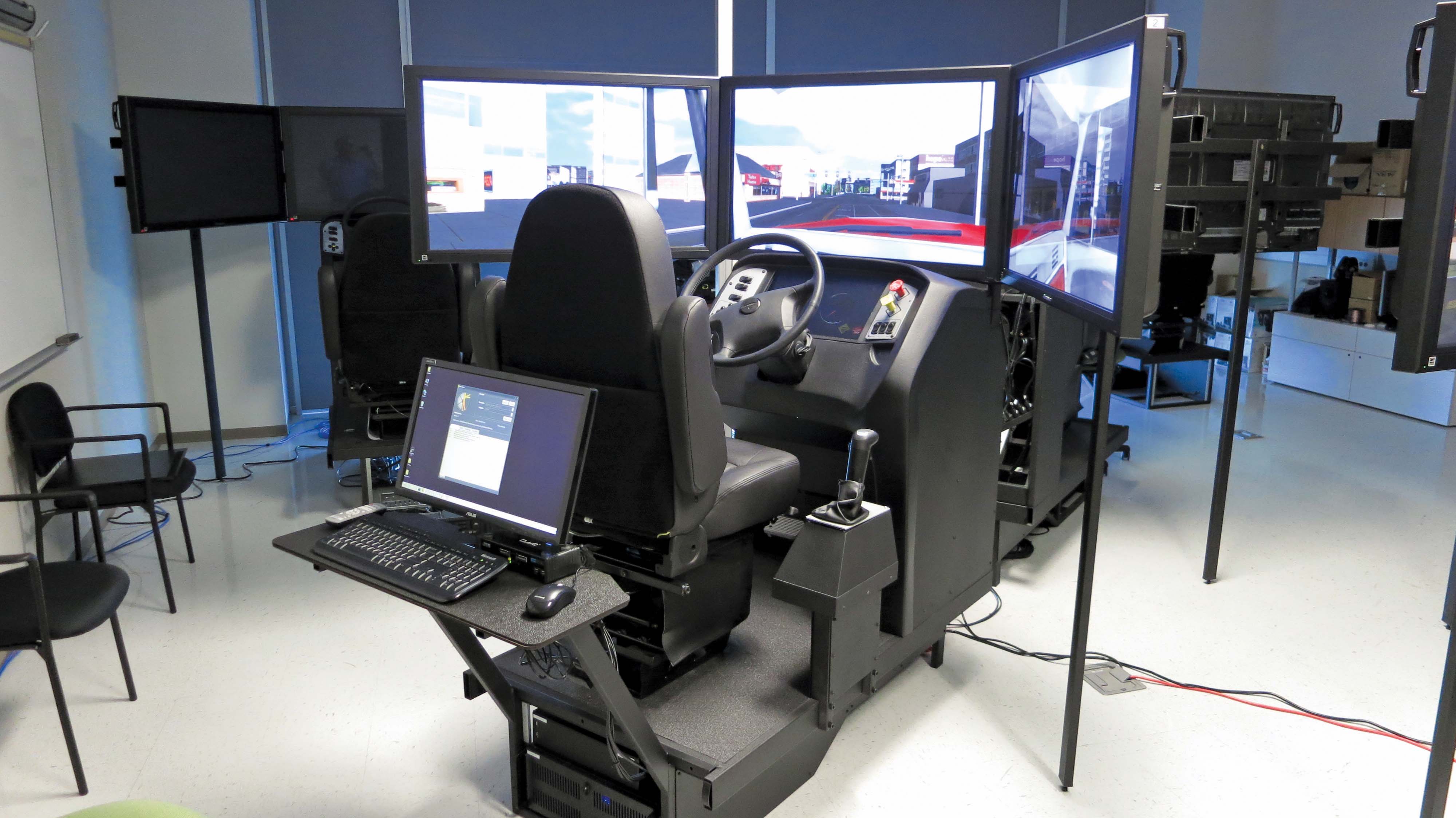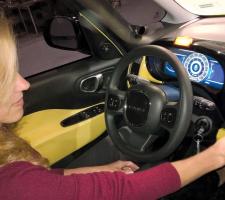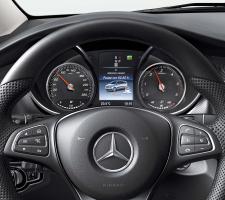
Falling asleep at the wheel is the primary cause in thousands of deaths on American and other roads, with truck drivers the most at-risk group. David Crawford investigates measures to counter drowsy driving.
Of all forms of distracted driving, drowsiness is becoming increasingly recognised as a major cause of serious road traffic accidents, particularly as long journeys at unsociable hours grow more common in both the private and commercial vehicle sectors. Surveys by the US National Sleep Foundation show that private motorists who admit having ever driven while feeling drowsy account for half of all American adults, while 20% had actually fallen asleep at the wheel during the previous year. But it is truck drivers that are most at risk.
The US
Estimates have to be conservative since, as the Foundation points out, “Currently, there is no definitive physiologic test or detection system for drowsiness equivalent to the breath analysers used to detect drunk-driving.”
These analysers can also prevent drunk-driving at the outset by triggering ignition locks. But in the current absence of equivalent devices, police can have difficulty in conclusively identifying drowsiness as a crash factor.
At-the-scene indicators are restricted to factors such as the typical involvement of single vehicles with lone drivers (who tend to be fatally or seriously injured); and the lack of evidence, such as skid marks, of any pre-crash avoiding manoeuvres.
In the quest for technological solutions, researchers in Wuhan, China, have proposed a driver assistant system that would react specifically to the sharp rises in lateral acceleration and yaw rate acceleration that typically occur when those at the wheel have not had enough sleep. The project recruited 50 volunteers to test a vehicle equipped with sensors to monitor its movements in scenarios involving driver drowsiness and intoxication, as well as distractions such as talking and watching the roadside instead of looking ahead.
Nodding off
In the US, technologies being developed includeIt has been in development for some years, partly owing to concerns from the US Department for Transportation’s Federal Motor Carrier Safety Administration over its ability to function at night or when drivers wear sunglasses. Delphi says it has now overcome these.
The technology detects and tracks the driver’s facial features, and then analyses give-away eyelid or head movements to infer fatigue - or distraction by non-driving tasks. Alerts can be audible, visual or haptic (such as a vibrating seat), to suit automakers’ own specifications.
The company is currently demonstrating the first two options on its test vehicles. The visual alternative flashes an orange light after a set period of inattention (for example, 2.8 seconds) as determined by the car manufacturer.
In other distracted driving scenarios – if, for example, the driver is captured looking away from the road and does not respond to an alert, the system will automatically activate collision mitigation or automatic braking responses. It also operates together with the company’s Workload Manager, which monitors drivers giving attention to, say, infotainment use, which it can automatically shut down if necessary.
Researchers initially explored other drowsiness indicators, such as driving performance and heart and breathing rates. They finally opted for the computer vision approach as offering the most direct evidence of the early onset of sleepiness and distraction, and as a platform available for sharing with future vision-based driver assistance applications. The company’s Kristen Kinley told ITS International that it is currently looking at likely options, but did not give details.
Another video-based technology, from California, US-headquartered
In a forward-looking initiative, the US National Highway Traffic Safety Administration has awarded the University of Iowa’s College of Engineering a US$650,000 grant for its National Advanced Driving Simulator to develop further methods of detecting drowsiness and other impairments to safe driving.
The Driver Monitoring of Inattention and Impairment Using Vehicle Equipment project, being run jointly with the University of Wisconsin, has already developed and tested algorithms that can successfully differentiate impaired from unimpaired drivers, at relatively low cost. One fresh approach, project principal investigator Tim Brown told ITS International, involves the potential for the direct measurement of levels of the brain’s electrical activity.
The National Sleep Foundation is closely monitoring these and other R&D efforts. It envisages US car manufacturers automatically installing the resulting products as these become available – with the US National Highway Traffic Safety Administration (NHTSA) laying down the necessary specifications and performance standards.
Legislative approaches
New Jersey is the first US state to have introduced legislation (often referred to as ‘Maggie’s Law’), laying down that drivers must not knowingly operate a vehicle while affected by lack of sleep. An offender who kills someone while drowsy can be prosecuted for vehicular homicide, assuming that police can collect satisfactory evidence in the absence of any objective tests. Other states are currently considering following suit.
In September 2014, the National Sleep Foundation announced model legislation, in the form of a draft 2015 Drowsy Driving Reduction Act, for passenger cars. This calls for the creation of new state task forces to study the prevalence of drowsy driving, evaluate the current regulatory and enforcement procedures, and make appropriate recommendations for advancing road safety. It has yet to be introduced into any US state legislature.
On the other side of the coin, US truckers have opposed mandatory screening for sleep apnoea – a treatable condition marked by abnormal breaks in breathing patterns during sleep, which can result in daytime drowsiness and cause sufferers to fall asleep without warning. Industry concerns have risen since a 2012 lawsuit in which a Texas widow won US$3.25 million from a company whose driver, a sufferer who had refused to have a medical test, killed her husband in a rear-end shunt at a road construction site.
So this really is an issue worth losing sleep over.
In Europe in
It stores this, and uses it as a template for continuously monitoring driver performance, via the vehicle control system. It can pick up anomalies in up to 70 types of vehicle movement from the quality of sensor data it receives.
At the heart of the solution is a highly sensitive detector for the accurate baseline measurement of steering speeds and wheel movements. This enables early detection of the 'floating transition' from being awake to drowsiness and gives the driver a timely warning - a harsh audible signal accompanied by a flashing ('take a break') dashboard display message.
The system is active at speeds of between 60km/h and 200km/h. The company's Angus Fitton stressed that it is advisory - “it suggests that you need a break by analysing the way you’re driving.” The driver remains in control at all times, and can reset the system at any point by pressing an 'OK' button on the steering wheel, after which it reconfigures their profile.
An enhanced version on S-Class Mercedes cars offers an additional bar chart display enabling the driver to self-assess alertness at any point, on the basis of the distance travelled so far (the risk is greatest on long-distance journeys, especially at night) and inputs from car controls. Green means a high level of attentiveness, with the latest version allowing the driver to alter system sensitivity, to engage it sooner, if desired.







